#Amanita bisporigera
Text

The Destroying Angel: A Mushroom With Deadly Intentions
No matter which destroying angel is local to where you are, all of them are deadly poisonous. In the eastern United States, the destroying angel is Amanita bisporigera.
In the western states, it is Amanita ocreata. And, in Europe, both Amanita virosa and Amanita verna are labeled destroying angels.
The destroying angel is one of the most deadly mushrooms in the world. It is commonly found across North America and Europe.
More info on:https://www.mushroomhuntress.com/the-destroying-angel-a-mushroom-with-deadly-intentions/
#Destroying Angel#mushrooms#autumn#summer#fall#Amanita bisporigera#Amanita ocreata#Amanita virosa#Amanita verna#poisonous#nature#plants#fungi
32 notes
·
View notes
Text

Funguary Feb 10 - Destroying Angel
Amanita bisporigera - the Destroying Angel - forms a complex calcite structure designed to mimic a human skeletal form and cause investigation. Upon close approach, it sheds millions of spores containing amatoxin, which inhibits RNA polymerase II and III. Destruction of the liver and kidneys is irreversible. Victims almost always become ghosts immediately, and other Destroying Angels arise around their deathbeds, spreading the contagion.
#original content#funguary#fairy#faerie#original art#demon#destroying angel#funguary week 2#funguary day 10#daemon#demonic#amanita#amanita bisporigera#funguary 2024
17 notes
·
View notes
Text




Ælfeitr and Amanita. 2022. +alts
#original character#traditional art#mixed media#digital art#angel#destroying angel#grim reaper#amanita bisporigera#poison mushroom#ælfeitr#aelfeitr#elf#my art
33 notes
·
View notes
Text
11 notes
·
View notes
Text
Just some fun guys I've seen in my travels
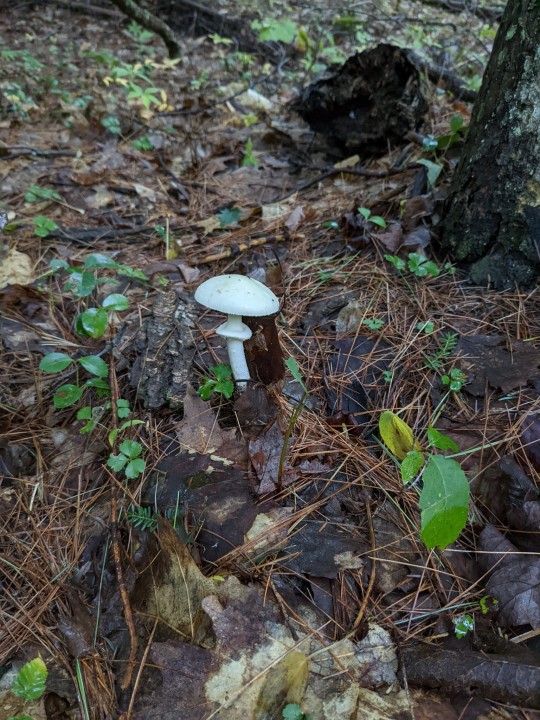

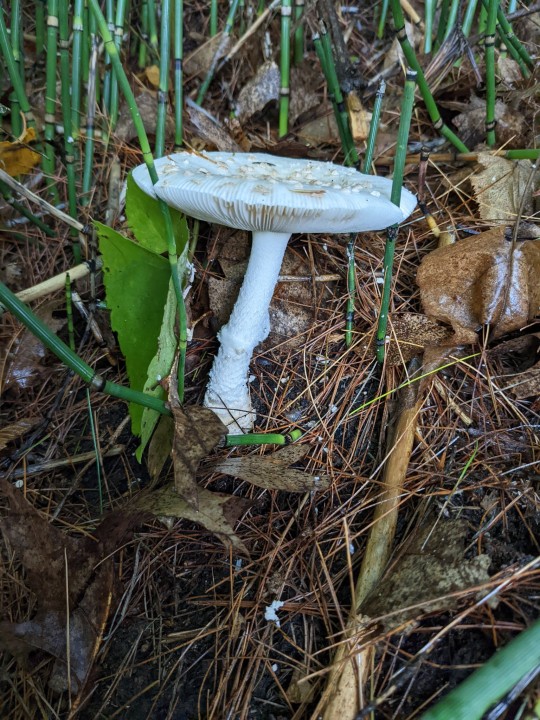




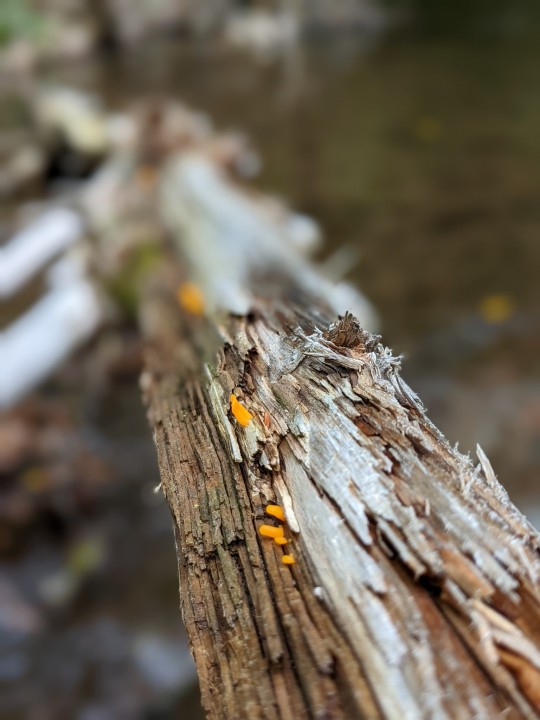

#fungi#mushrooms#amanita#amanita flavoconia#amanita bisporigera#coral mushroom#yellow patches#destroying angel#stinkhorn#purple mushrooms
6 notes
·
View notes
Text

Looking for a way to boost your energy and immunity naturally? Cordyceps Militaris is a powerful natural adaptogen that supports your health at the cellular level.
Our Cordyceps Militaris (50g) offers numerous health benefits:
Boosts immunity
Increases energy and endurance
Supports cardiovascular health
Provides antioxidant protection
This product is perfect for athletes and anyone looking to improve their overall well-being. Don’t miss the chance to try this amazing gift from nature!
Order now on our website and see the benefits for yourself: Cordyceps Militaris 50g https://amanitamarket.com/.../491830502-504674303531...
#Cordyceps#CordycepsMilitaris#Immunity#Energy#Health#NaturalProducts#Adaptogen
#fliegenpilze_bestellen#fly_agaric#getrockneter_fliegenpilz#fliegenpilze#fliegenpilz_preis#amanita_pantherina#amanita#amanita bisporigera#amanita caplan#amanita design
0 notes
Text






Different species of Amanita and boletes. Second row left is a strong contender for one of the "Destroying Angel" species of Amanita, possibly A. bisporigera. The only way to know for sure is to take a big bite, let go and let God*
*disclaimer: under no circumstances should you ever do this
#mycology#fungi#mushrooms#nature photography#dirtcore#goblincore#forestcore#forest floor#foraging#nature#the fungus among us
285 notes
·
View notes
Text
*deep breath* This, folks, is EXACTLY why I am writing The Everyday Naturalist. Because it's not enough to have an app. You HAVE to know how to use multiple identification tools and have keen observational skills if you are going to safely forage or otherwise identify things in nature.
Here's the deal. Apps are a tool. They are not infallible, and they should never, ever, EVER be your only tool for identifying mushrooms and other organisms. This goes even moreso for when you're trying to determine whether something is edible or not. I go into more detail about why apps should never be used by themselves in this article that I wrote a few months back, but let's explore a bit more about how an app works.
Any identification app has access to a particular database of pictures and other information for various species. In the case of my favorite app, iNaturalist, it draws from the over 156 million (and growing) observations of animals, plants, fungi, and other living beings that have been uploaded to it over the years.
When you upload a photo to an app, your phone usually inputs the date, time, and GPS location automatically, though these can be updated manually if need be. Then the app's algorithms sift through the database looking for species that are found in the same location at the same time of year, and which have similar photos.
Notice that I said SIMILAR, not identical. Many organisms, to include many fungi, have varying appearances based on subspecies, life stage, and other factors. And there are a lot of species that have close lookalikes, whether we're talking birds, wildflowers, mushrooms, etc.
So the algorithms then use their search results to give you their suggestion(s) of what most closely resembles the organism you are trying to identify. Some give you one answer; others, like iNaturalist, offer you a list to choose from, and may also qualify their response with "We're not sure, but these were found nearby" or something similar. The first one on the list is NOT always going to be the correct answer. However, the app doesn't have reasoning skills, and all it can do is play match-up and then produce suggestions based on that. (Yes, other iNaturalist users can come along and comment on your observations once you've uploaded and saved them, but you always want to carefully assess their claims, too.)
There are several toxic mushrooms that are implicated in poisonings on a regular basis; among them are what I call the "deadly Amanitas": the death cap (Amanita phalloides) and the destroying angels (A. bisporigera, A. ocreata, and A. verna.) In addition to these species' respective native ranges in Europe and North America, some have managed to make their way to other parts of the world. This includes in Australia, where there is a current investigation underway over a woman who fed several family members deadly Amanitas, three of whom have died.
These poisonous mushrooms have several edible lookalikes. As one example, while matsutakes (Tricholoma matsutake) are often brown, they may sometimes appear white, especially if the brown layer has peeled off. And field mushrooms (Agaricus spp, especially A. bisporus and A. campestris) are also large white mushrooms, though their gills and spores tend to be brown rather than the white of Amanita species.
Still, someone taking a picture of a large white mushroom--especially if they neglect to take another picture of the gills (the more pictures you take, the better)--could easily end up with an app telling them an Amanita is an Agaricus. Or they might read that some people think it's safe to eat Amanita muscaria if you parboil it long enough, and assume that other Amanita species are the same way (one of MANY reasons I do not advocate for treating A. muscaria as an edible.)
So--again--DO NOT USE APPS AS YOUR ONLY ID TOOL. Use them in conjunction with multiple field guides, websites, other foragers, etc. Practice using these tools and developing a critical eye before you go out foraging. Be super cautious, and when in doubt, throw it out.
And my inbox is ALWAYS open, as is my email (rebeccathenaturalist(at)gmail(dot)com.) You can ALWAYS email me with questions about field guides, apps, and other resources, and I am also happy to look at pictures of mushrooms (and other living beings) you're trying to identify, whether edible or not. You might need to give me a few days to reply, but I will get back to you. Don't use ME as your only source, either; I'm just one person. But I can point you to online groups that are also good resources.
#mushrooms#mushroom poisoning#deadly mushrooms#fungus#fungi#mycology#mushroom hunting#mushroom foraging#foraging#wild foods#edible mushrooms#nature#nature identification#naturalist#The Everyday Naturalist
165 notes
·
View notes
Text

Send this in the group chat and try not to be annoyed when your friends get your vibe all wrong
1- Black vulture (Coragyps atratus)
2- Harnessed tiger moth (Apantesis phalerata)
3- American badger (Taxidea taxus)
4- Long-tailed salamander (Eurocentric longicauda)
5- American alligator (Alligator mississippiensis)
A- Trumpet pitchers (Sarracenia spp)
B- Destroying Angel mushroom (Amanita bisporigera)
C- Dandelion (Taraxacum officinale)
D- California palm (Washingtonian filifera)
E- Fireweed (Chamerion angustifolium)
!- Obsidian
$- Turquoise
%- Pyrite
#- Copper
@- Lapis lazuli
#which combo are you#shitposts#please for the love of god geologists don’t hassle me on the mineral thing#for the nitpicks out there when I say North American I mean ‘can be found in but is not necessarily exclusive to’#just trying to get my fellow Americans excited about the things they can find outside their door
196 notes
·
View notes
Text


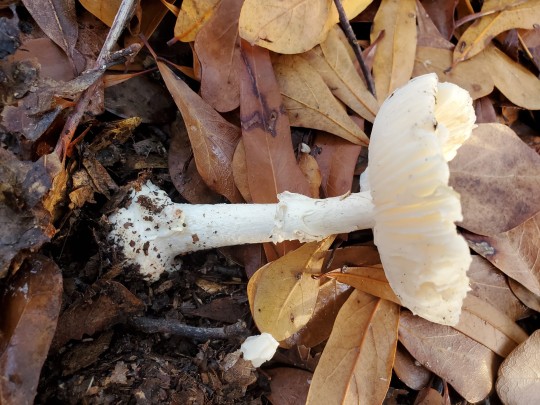
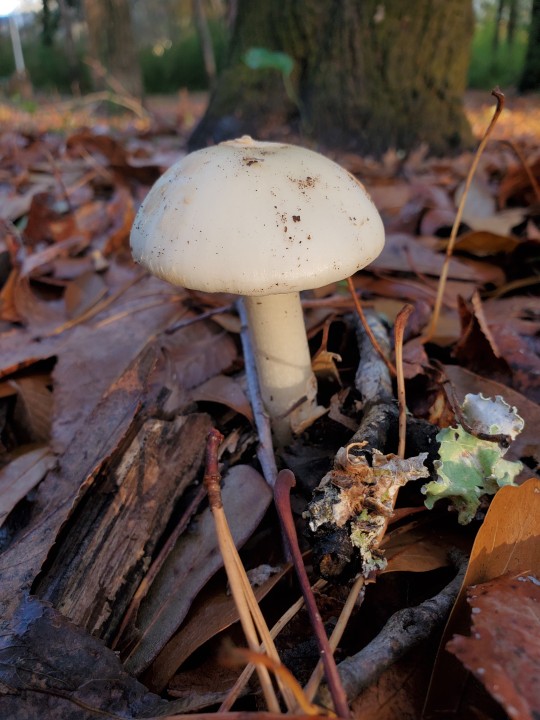




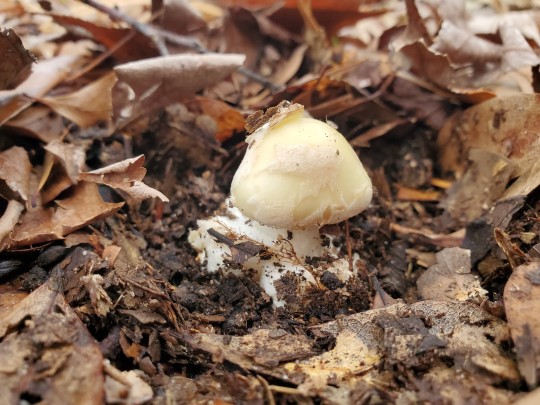
Eastern NA Destroying angel 》 Amanita bisporigera
Famous as some of the most toxic mushrooms currently described, the Destroying Angel name is shared by four species of white amanita mushrooms, the most popularly known being A. virosa, a species common in Europe.
A. verna also occurs in Europe but in the springtime, rather than the autumn as A. virosa does. A. ocreata is also known as the Western North American destroying angel. A. bisporigera (pictured here) occurs in eastern North America and south into Mexico.
While no harm can come from simply handling these deadly mushrooms, consuming a piece about the size of your thumbnail would likely be enough to kill you.
I've always been intrigued by these species and was very happy to find these specimens!! The name alone, I mean come on. Metal af! 🤍
Southeast Texas, 24 Dec. 2023
#amatuer mycology#mushroom hunting#mushrooms#mycology#wild fungi#fungi#mushrooms of texas#texas mushrooms#fungi of texas#fungarium#foraging#mushroom species#wild mushrooms#mushroom#species identification#destroying angel#angel of death#deadly mushrooms#toxic mushrooms#special interest#amanita
12 notes
·
View notes
Text

Ælfeitr and Amanita. 2022.
#original character#traditional art#mixed media#digital art#sketch#pencil#angel#dokkalfar#Dökkálfar#drow#amanita bisporigera#grim reaper#elf#my art
18 notes
·
View notes
Text
Are you even ready for this. I have a fic called Ectomycorrhizal Observations (Destroying Angels) and I am about to explain so many mushrooms facts to you

Destroying Angel, ID in alt text
As you may guess from the layman's name, this is a harmful mushroom. It hails from the Amanita genus, and is one of the many species with toxins when consumed!
The ones that specifically get mentioned in the fic are two of the species noted to grow in conjunction with oak trees - A. ocreata and A. bisporigera
Despite being called Destroying Angels, they create an ectomycorrhizal relationship to oak trees! It is mutually beneficial
Destroying Angels will grow into the roots of oak trees, which is why they grow on Sunday's legs
The destruction in their name moreso refers to the effect on humans, as they are extremely deadly, able to kill you in less than a week with varying symptoms if you ingest them
While the fic doesn't offer too many hints for identification (the stipes are depicted to be much shorter in the piece, while in real life they tend to be quite long proportional to the caps) there are a few nods to the various sizes Destroying Angels can be at their different stages
You may have noticed the sweet smell constantly described also!! A. Bisporigera will produce a smell as it ages, described as one of two things - rotting meat or overwhelming sweetness
2 notes
·
View notes
Text

Dive into a world of wellness with Lion's Mane (Hericium erinaceus)! Known for its powerful memory-enhancing properties, this unique mushroom can boost your focus and overall brain health. At our store, you'll find a 100% natural product – Hericium erinaceus in a 50g package.

Pure and organic product
Immune support and nervous system booster
Perfect for vegans and vegetarians
Order now on our website and start nurturing your health with nature! https://amanitamarket.com/.../491830502-682449614731...
#Health#Mushrooms#HericiumErinaceus#AmanitaMarket#MemoryBoost
#getrockneter_fliegenpilz#fly_agaric#amanita#fliegenpilze#fliegenpilze_bestellen#amanita caplan#fliegenpilz_preis#amanita bisporigera#amanita_pantherina#amanita design
0 notes
Text
So I've run into an interesting issue with my new amanita bisporigera tattoo. The design I went with includes the volva at the base of the stalk, which I did want, as I requested the full image of the fruiting body. However. Especially if my sleeve is rolled down to cover the cap and gills. It ummmmmm looks rather phallic. Lmfao.
#txt#dionysian of me perhaps.#i think the solution is to get some vining plants or something as an addition to the start of a botanical half sleeve#and have the vines curl around the volva to disrupt the shape#for now i just live like this though!#would have been even funnier if I'd asked for amanita phalloides#ill post a pic maybe tonight too. had to take saniderm off yesterday in the showet bc water got in it
9 notes
·
View notes
Note
What does Adonis seek in a partner? Is he the cuddly type, or more reserved with his affection? Does he have a favorite mushroom? (Mine is the Amanita Bisporigera)
"what do i seek in a partner? someone who listens. not just to what i have to say, but listen to what i want to happen. does that make sense? i'm more reserved. affection is for indoors. and the answer to the mushroom question is hydnellum peckii."
13 notes
·
View notes
Note
My contributions to df fungi!
Destroying Angel (Amanita bisporigera
Eyelash cup (Scutellinia scutellata)
Fly Agaric (Amanita muscaria)
Frogskin brittlegill (Lactarius atroviridis)
Heliotrope webcap (Cortinarius iodes)
Ghoul’s eyes (Calostoma lutescena)
Gunpowder deathcap (Amanita onusta)
Lemon drops (Bisporella citrina)
Mousepee pinkgill (Entoloma incanum)
Purple coral (Clavaria zollingeri).
Sickener: (Russula emetica)
Swamp beacon (Mitrula elegans)
Witches hat (Hygrocybe conica)
!!!!!
3 notes
·
View notes